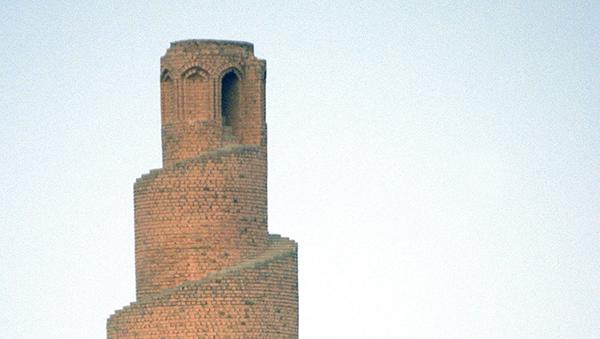From the Emirates: On Saadiyat, Al Fajr clocks in place of call to prayer

Graphic by Agustina Zegers/The Gazelle
November 3, 2014
Editor’s note: This article was originally published in Issue 46 of The Gazelle, the student publication at NYU Abu Dhabi. It has been reprinted with permission as a part of an ongoing collaboration between The Gazelle and WSN to connect our two campuses.
With the shift to Saadiyat Island, NYU Abu Dhabi students can no longer hear the call to prayer throughout campus. The move marks the campus’s first year without the call to prayer, and some students have reacted to this change with nostalgia, others with more vocal objections.
The call to prayer, or adhaan, is a recitation by a muezzin that reminds Muslims of the five daily prayers. In Abu Dhabi, the call to prayer is recited from the Sheikh Zayed Grand Mosque while being broadcasted to other mosques throughout the city.
Students have proposed a series of initiatives to bring the call to prayer back to campus. Islamic custom, however, dictates that the call to prayer must be live and emanate from a mosque. Since the university does not have the capability to properly broadcast its own call to prayer, a different way of navigating the issue had to be found. Director of Intercultural Education and Spiritual Life Alta Mauro worked with different students on campus to address the issue.
“The best thing we can do in lieu of having a mosque within earshot of Saadiyat,” said Mauro, “is that if we have a few of those [Al Fajr clocks that display prayer times] in very public places that would illuminate when you would have heard the call, if you were within earshot … in both the East and West Dining Halls and then also in the Campus Center.”
This initiative is already underway, with clocks now placed in the prayer rooms. The process has relied on Mauro gauging a diverse range of student opinion in order to figure out what would best fulfill the needs of the community. So far, she said, students have approached her saying that this is a good first step.
Student Government President Hamel Al Qubaisi agreed, but maintained that more should be done.
“I want to eventually hear the call to prayer just like we hear it in the malls. Although, a step in the right direction, the clocks are not enough,” he said.
Janeen Asfour, president of the Islamic Student Union, echoed this sentiment.
“I think the administration should set up speakers on the highline so that adhaan can at least be heard,” she said. “Another alternative is working with the government of Abu Dhabi to build a [minaret] so that the adhaan that is heard in Abu Dhabi can also be heard on Saadiyat.”
For both Asfour and Al Qubaisi, the call to prayer is an important part of spiritual life and a way to structure their days. Neither of them considered reinstating the call to prayer as an example of the university giving special preference to one religious group over the others, mainly because the adhaan is also part of the daily life in Abu Dhabi. Al Qubaisi explained that he has heard just as much desire for the call to prayer from non-Muslim students.
“The request for the call to prayer is not exclusively for Muslims. In fact, more non-Muslims have asked about the lack of call to prayers than Muslims, based on my interactions,” he said. “Recalling their times in Sama, they miss the voice of a place … This is all part of the identity of the place.”
Senior Gabriel Burgazzi supports the movement to bring the call to prayer to campus, but not for personal religious reasons. Instead he sees it as an integral part of the place that surrounds us.
“We are kind of in a bubble, which is a critique of the university and the global system, that we are separate from our surroundings,” he said. “Sound permeates and is a part of where we are … and I appreciate being reminded of that.”
Email Sam Ball at [email protected].























































































































































